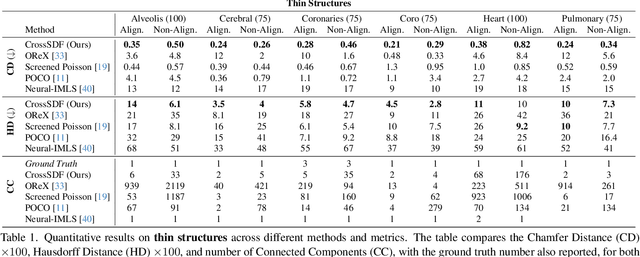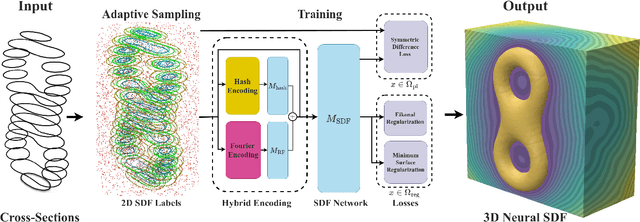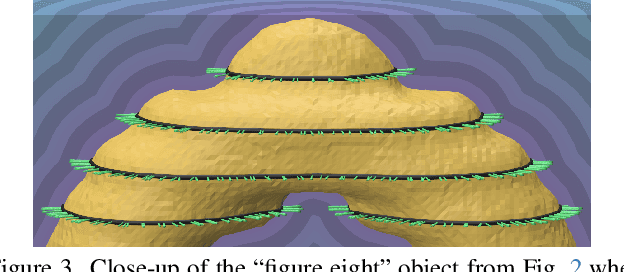Oisin Mac Aodha
Interpretable Text-Guided Image Clustering via Iterative Search
Jun 14, 2025Abstract:Traditional clustering methods aim to group unlabeled data points based on their similarity to each other. However, clustering, in the absence of additional information, is an ill-posed problem as there may be many different, yet equally valid, ways to partition a dataset. Distinct users may want to use different criteria to form clusters in the same data, e.g. shape v.s. color. Recently introduced text-guided image clustering methods aim to address this ambiguity by allowing users to specify the criteria of interest using natural language instructions. This instruction provides the necessary context and control needed to obtain clusters that are more aligned with the users' intent. We propose a new text-guided clustering approach named ITGC that uses an iterative discovery process, guided by an unsupervised clustering objective, to generate interpretable visual concepts that better capture the criteria expressed in a user's instructions. We report superior performance compared to existing methods across a wide variety of image clustering and fine-grained classification benchmarks.
Jamais Vu: Exposing the Generalization Gap in Supervised Semantic Correspondence
Jun 09, 2025Abstract:Semantic correspondence (SC) aims to establish semantically meaningful matches across different instances of an object category. We illustrate how recent supervised SC methods remain limited in their ability to generalize beyond sparsely annotated training keypoints, effectively acting as keypoint detectors. To address this, we propose a novel approach for learning dense correspondences by lifting 2D keypoints into a canonical 3D space using monocular depth estimation. Our method constructs a continuous canonical manifold that captures object geometry without requiring explicit 3D supervision or camera annotations. Additionally, we introduce SPair-U, an extension of SPair-71k with novel keypoint annotations, to better assess generalization. Experiments not only demonstrate that our model significantly outperforms supervised baselines on unseen keypoints, highlighting its effectiveness in learning robust correspondences, but that unsupervised baselines outperform supervised counterparts when generalized across different datasets.
Representational Difference Explanations
May 29, 2025Abstract:We propose a method for discovering and visualizing the differences between two learned representations, enabling more direct and interpretable model comparisons. We validate our method, which we call Representational Differences Explanations (RDX), by using it to compare models with known conceptual differences and demonstrate that it recovers meaningful distinctions where existing explainable AI (XAI) techniques fail. Applied to state-of-the-art models on challenging subsets of the ImageNet and iNaturalist datasets, RDX reveals both insightful representational differences and subtle patterns in the data. Although comparison is a cornerstone of scientific analysis, current tools in machine learning, namely post hoc XAI methods, struggle to support model comparison effectively. Our work addresses this gap by introducing an effective and explainable tool for contrasting model representations.
MVSAnywhere: Zero-Shot Multi-View Stereo
Mar 28, 2025Abstract:Computing accurate depth from multiple views is a fundamental and longstanding challenge in computer vision. However, most existing approaches do not generalize well across different domains and scene types (e.g. indoor vs. outdoor). Training a general-purpose multi-view stereo model is challenging and raises several questions, e.g. how to best make use of transformer-based architectures, how to incorporate additional metadata when there is a variable number of input views, and how to estimate the range of valid depths which can vary considerably across different scenes and is typically not known a priori? To address these issues, we introduce MVSA, a novel and versatile Multi-View Stereo architecture that aims to work Anywhere by generalizing across diverse domains and depth ranges. MVSA combines monocular and multi-view cues with an adaptive cost volume to deal with scale-related issues. We demonstrate state-of-the-art zero-shot depth estimation on the Robust Multi-View Depth Benchmark, surpassing existing multi-view stereo and monocular baselines.
Representational Similarity via Interpretable Visual Concepts
Mar 19, 2025Abstract:How do two deep neural networks differ in how they arrive at a decision? Measuring the similarity of deep networks has been a long-standing open question. Most existing methods provide a single number to measure the similarity of two networks at a given layer, but give no insight into what makes them similar or dissimilar. We introduce an interpretable representational similarity method (RSVC) to compare two networks. We use RSVC to discover shared and unique visual concepts between two models. We show that some aspects of model differences can be attributed to unique concepts discovered by one model that are not well represented in the other. Finally, we conduct extensive evaluation across different vision model architectures and training protocols to demonstrate its effectiveness.
Few-shot Species Range Estimation
Feb 20, 2025Abstract:Knowing where a particular species can or cannot be found on Earth is crucial for ecological research and conservation efforts. By mapping the spatial ranges of all species, we would obtain deeper insights into how global biodiversity is affected by climate change and habitat loss. However, accurate range estimates are only available for a relatively small proportion of all known species. For the majority of the remaining species, we often only have a small number of records denoting the spatial locations where they have previously been observed. We outline a new approach for few-shot species range estimation to address the challenge of accurately estimating the range of a species from limited data. During inference, our model takes a set of spatial locations as input, along with optional metadata such as text or an image, and outputs a species encoding that can be used to predict the range of a previously unseen species in feed-forward manner. We validate our method on two challenging benchmarks, where we obtain state-of-the-art range estimation performance, in a fraction of the compute time, compared to recent alternative approaches.
When Pre-trained Visual Representations Fall Short: Limitations in Visuo-Motor Robot Learning
Feb 05, 2025Abstract:The integration of pre-trained visual representations (PVRs) into visuo-motor robot learning has emerged as a promising alternative to training visual encoders from scratch. However, PVRs face critical challenges in the context of policy learning, including temporal entanglement and an inability to generalise even in the presence of minor scene perturbations. These limitations hinder performance in tasks requiring temporal awareness and robustness to scene changes. This work identifies these shortcomings and proposes solutions to address them. First, we augment PVR features with temporal perception and a sense of task completion, effectively disentangling them in time. Second, we introduce a module that learns to selectively attend to task-relevant local features, enhancing robustness when evaluated on out-of-distribution scenes. Our experiments demonstrate significant performance improvements, particularly in PVRs trained with masking objectives, and validate the effectiveness of our enhancements in addressing PVR-specific limitations.
acoupi: An Open-Source Python Framework for Deploying Bioacoustic AI Models on Edge Devices
Jan 29, 2025Abstract:1. Passive acoustic monitoring (PAM) coupled with artificial intelligence (AI) is becoming an essential tool for biodiversity monitoring. Traditional PAM systems require manual data offloading and impose substantial demands on storage and computing infrastructure. The combination of on-device AI-based processing and network connectivity enables local data analysis and transmission of only relevant information, greatly reducing storage needs. However, programming these devices for robust operation is challenging, requiring expertise in embedded systems and software engineering. Despite the increase in AI-based models for bioacoustics, their full potential remains unrealized without accessible tools to deploy them on custom hardware and tailor device behaviour to specific monitoring goals. 2. To address this challenge, we develop acoupi, an open-source Python framework that simplifies the creation and deployment of smart bioacoustic devices. acoupi integrates audio recording, AI-based data processing, data management, and real-time wireless messaging into a unified and configurable framework. By modularising key elements of the bioacoustic monitoring workflow, acoupi allows users to easily customise, extend, or select specific components to fit their unique monitoring needs. 3. We demonstrate the flexibility of acoupi by integrating two bioacoustic classifiers: BirdNET, for the classification of bird species, and BatDetect2, for the classification of UK bat species. We test the reliability of acoupi over a month-long deployment of two acoupi-powered devices in a UK urban park. 4. acoupi can be deployed on low-cost hardware such as the Raspberry Pi and can be customised for various applications. acoupi standardised framework and simplified tools facilitate the adoption of AI-powered PAM systems for researchers and conservationists. acoupi is on GitHub at https://github.com/acoupi/acoupi.
WildSAT: Learning Satellite Image Representations from Wildlife Observations
Dec 19, 2024Abstract:What does the presence of a species reveal about a geographic location? We posit that habitat, climate, and environmental preferences reflected in species distributions provide a rich source of supervision for learning satellite image representations. We introduce WildSAT, which pairs satellite images with millions of geo-tagged wildlife observations readily-available on citizen science platforms. WildSAT uses a contrastive learning framework to combine information from species distribution maps with text descriptions that capture habitat and range details, alongside satellite images, to train or fine-tune models. On a range of downstream satellite image recognition tasks, this significantly improves the performance of both randomly initialized models and pre-trained models from sources like ImageNet or specialized satellite image datasets. Additionally, the alignment with text enables zero-shot retrieval, allowing for search based on general descriptions of locations. We demonstrate that WildSAT achieves better representations than recent methods that utilize other forms of cross-modal supervision, such as aligning satellite images with ground images or wildlife photos. Finally, we analyze the impact of various design choices on downstream performance, highlighting the general applicability of our approach.
CrossSDF: 3D Reconstruction of Thin Structures From Cross-Sections
Dec 05, 2024



Abstract:Reconstructing complex structures from planar cross-sections is a challenging problem, with wide-reaching applications in medical imaging, manufacturing, and topography. Out-of-the-box point cloud reconstruction methods can often fail due to the data sparsity between slicing planes, while current bespoke methods struggle to reconstruct thin geometric structures and preserve topological continuity. This is important for medical applications where thin vessel structures are present in CT and MRI scans. This paper introduces \method, a novel approach for extracting a 3D signed distance field from 2D signed distances generated from planar contours. Our approach makes the training of neural SDFs contour-aware by using losses designed for the case where geometry is known within 2D slices. Our results demonstrate a significant improvement over existing methods, effectively reconstructing thin structures and producing accurate 3D models without the interpolation artifacts or over-smoothing of prior approaches.
 Add to Chrome
Add to Chrome Add to Firefox
Add to Firefox Add to Edge
Add to Edge